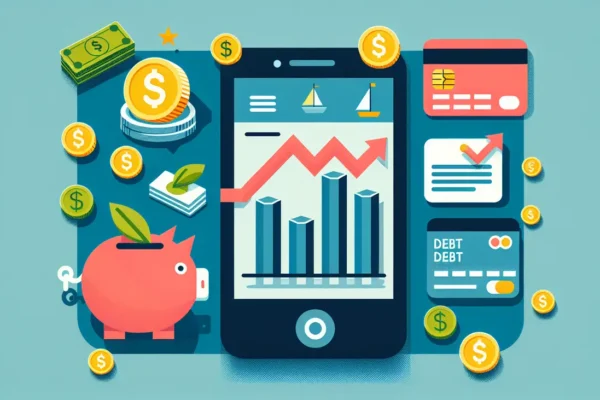Effective communication is the cornerstone of successful B2B debt recovery. Clear, consistent, and empathetic exchanges can transform challenging debt collections into opportunities for building stronger business relationships. In this blog post, we’ll explore twelve strategies to enhance communication in B2B debt recovery, ensuring productive outcomes for both parties involved.
1. Understand Your Client’s Situation
Before initiating a debt recovery conversation, take the time to understand your client’s financial situation. This shows empathy and helps you tailor your approach accordingly. It’s crucial to consider whether they’re facing temporary cash flow issues or if they’re dealing with long-standing financial troubles. This insight allows you to choose the most appropriate strategy, whether that involves restructuring their debt or offering flexible payment plans. Approach this step with a sense of genuine concern and readiness to listen, as it lays the foundation for a constructive dialogue.
An in-depth understanding can also reveal if the client values your business relationship enough to work through their financial difficulties to maintain it. You might find it helpful to conduct a bit of research on their industry trends, which can provide context to their financial troubles. This effort demonstrates your commitment to a mutually beneficial relationship and portrays your company as one that is reasonable and supportive, which is more likely to result in cooperative solutions.
2. Be Transparent about Terms and Conditions
Ensure that all terms and conditions are clearly communicated from the outset. Transparency builds trust and reduces the likelihood of disputes later on. Spell out the payment terms, including due dates, interest rates for late payments, and any other relevant policies, right from the start. This gives clients no room for ambiguity and prepares them for future interactions concerning debt recovery.
Leveraging transparent communication is key to avoiding misunderstandings and fostering a sense of trust. Make sure to clearly document all agreements and keep clients informed about changes in terms promptly. This approach not only demonstrates professionalism but also reassures clients that they are entering into a fair and equitable agreement.
To reinforce trust further, ensure your clients have easy access to these terms and regularly remind them of their obligations in a professional and non-intrusive manner. Providing regular updates and maintaining an open line for any queries also underscores the importance you place on transparency.
3. Utilize Multiple Communication Channels
Use a variety of communication methods, such as emails, phone calls, and meetings, to reach your clients effectively and ensure your message is received. Different clients have different communication preferences, and understanding these can significantly increase your chances of resolving debt issues. While emails provide a formal record of communication, phone calls allow for more personal and immediate interaction.
Additionally, in-person meetings can sometimes be more effective in conveying the seriousness of the situation and discussing solutions in detail. Combining these channels ensures that your clients receive your message in the way that’s most convenient and effective for them, thereby facilitating smoother dealings. The integration of technology, such as CRM systems, can further streamline this process and ensure consistency in your outreach efforts.
4. Establish Clear Follow-Up Procedures
Set up a system for regular follow-ups to keep the communication flow steady and demonstrate your commitment to resolving the situation. Timely follow-ups show that you are proactive and serious about the debt recovery process. Create a follow-up calendar and stick to it, with scheduled reminders to send out communications at regular intervals.
Incorporating structured follow-up systems ensures that no client slips through the cracks. Using automated reminders for follow-ups can save time and avoid the risk of human error. Every follow-up should be friendly but firm, maintaining a balance between urgency and understanding, and continue to document each interaction meticulously.
Each stage of the follow-up process should be clearly outlined to both your team and the debtor. This transparency helps manage expectations and reinforces the seriousness of their obligations.
5. Implement Professionalism and Courtesy
Maintain a professional and courteous tone in all interactions, regardless of the situation. Politeness helps to keep the conversation productive. Even when faced with frustration or non-cooperation, it’s crucial to stay composed and respectful. This not only upholds your company’s reputation but also increases the likelihood of a constructive response from the client.
Incorporating a courteous approach into your communication strategy can significantly impact the outcome of your debt recovery efforts. Efforts to empathize with the debtor’s situation and maintaining a calm demeanor even in difficult conversations can foster goodwill and lead to more positive resolutions.
When clients feel respected, they are more likely to reciprocate with cooperation, and may even prioritize payments to maintain their relationship with your business. Small courtesies, such as acknowledging positive behaviors or timely payments, go a long way in reinforcing a cooperative spirit.
6. Introduce Flexible Payment Options
Offering flexible payment plans can encourage clients to settle their debts more willingly, demonstrating your understanding of their financial constraints. This can be particularly helpful during periods of economic downturns when many businesses face liquidity issues.
Creating tailored payment plans that align with the debtor’s cash flow can assist in managing outstanding debts more effectively. Such flexibility demonstrates your willingness to work with clients and can often lead to more successful recovery outcomes without needing to resort to more aggressive means.
Regularly reviewing these plans and making necessary adjustments can keep the debtor on track and ensure continued progress towards debt repayment. Be clear about the terms and ensure both parties have a shared understanding to avoid future disagreements.
7. Provide Clear Documentation
Ensure that all communications are well-documented. This provides a clear record for both parties and helps avoid misunderstandings. Detailed records of calls, emails, and meetings create a timeline of events that can be invaluable if the situation escalates or if disagreements arise.
Keeping organised records is crucial in maintaining a structured and professional approach to debt recovery. Documentation also serves to back up your actions, providing transparency and reinforcing your adherence to fair practices. It also instills confidence in your clients, knowing that all interactions are tracked meticulously.
8. Use Technology to Your Advantage
Leverage technology tools like CRM systems to track communications and streamline the debt recovery process. These systems can help you manage contact information, record interactions, and schedule follow-ups, ensuring that all steps in the debt recovery process are executed timely and effectively.
Additionally, using advanced software solutions can automate many repetitive tasks, freeing up your team to focus on more strategic activities. Technology also allows for data analysis, helping to identify patterns and trends in debt recovery that can inform future strategies.
9. Train Your Team Effectively
Provide comprehensive training for your team on effective communication strategies and the intricacies of B2B debt recovery. Equip them with the skills to handle difficult conversations and to resolve disputes amicably. Regular training sessions on best practices and new techniques can keep your team sharp and prepared for any situation.
Fostering a culture of continuous learning and development within your team ensures they remain motivated and equipped to handle the challenges of debt recovery. This not only improves their confidence but also makes them more effective in their roles.
Investing in training can significantly impact employee performance. Empowered and well-trained staff are better at maintaining professionalism and handling complex debt recovery cases, leading to improved success rates and higher satisfaction among clients.
10. Listen Actively to Clients
Active listening shows clients that their concerns are being taken seriously and helps you better address their needs. This involves not just hearing the words your clients say but understanding the emotions and motivations behind them. By practicing active listening, you open the door to more honest and productive conversations.
During these conversations, reflect back what you’ve heard to confirm understanding and show empathy. This can de-escalate tensions and foster trust, making clients more willing to cooperate with debt recovery efforts.
11. Set Realistic Expectations
Communicate what your clients can realistically expect from the debt recovery process to avoid setting them up for disappointment. Being honest about timelines, possible outcomes, and the steps involved helps manage their expectations and builds trust.
Ensure that these expectations are understood from the beginning and re-communicated as needed throughout the process. By keeping clients informed and setting clear, attainable goals, you create a more cooperative environment and enhance the likelihood of a successful resolution.
12. Follow Up with Gratitude
After resolving a debt recovery issue, a simple thank-you note can go a long way in maintaining a positive relationship. Expressing appreciation for their cooperation and understanding can leave a lasting positive impression. It shows that you value their business and their efforts to resolve the debt.
Thanking your clients for their efforts to resolve the debt reinforces the positive aspects of your business relationship. It also lays the groundwork for more favorable interactions in the future, promoting continued goodwill.
Furthermore, a thank you note can humanize your company and make clients more likely to approach you proactively in the future should they encounter financial difficulties. It helps solidify a sense of partnership and mutual respect.







